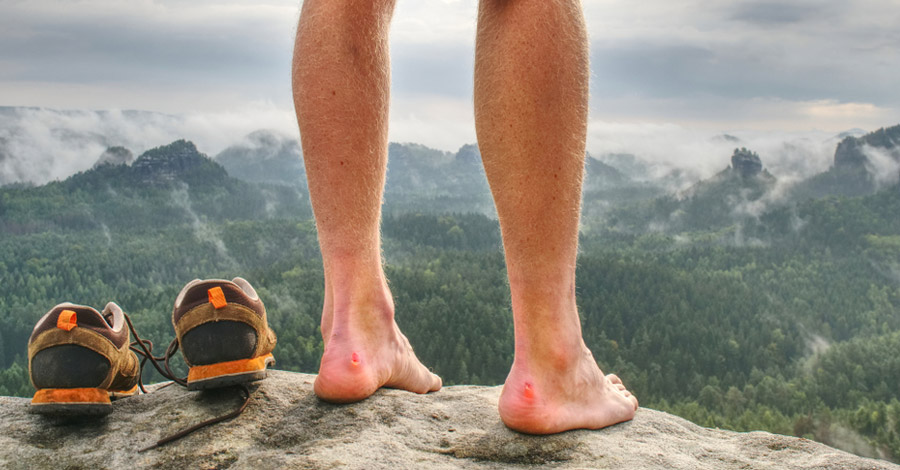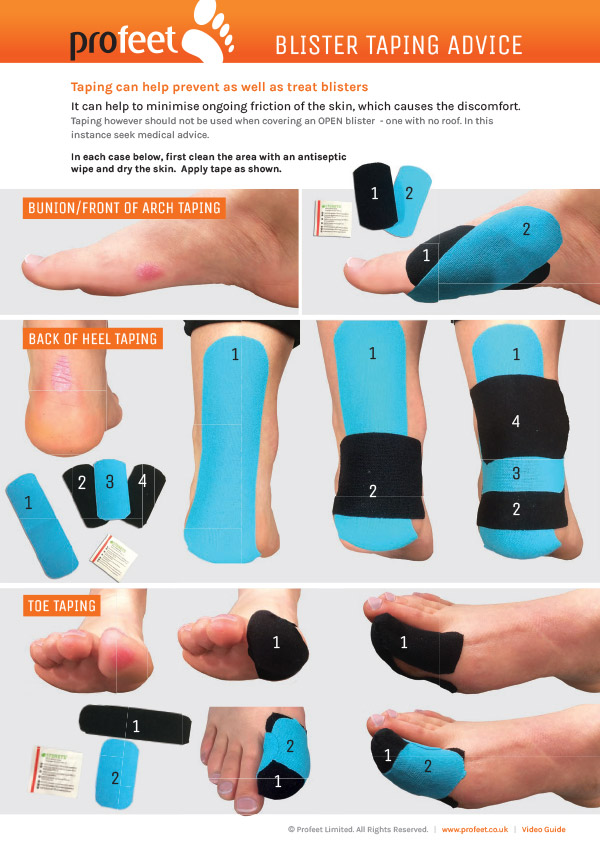Service by appointment only
Call 020 7736 0046
Call 020 7736 0046 To book

Blisters are one of the lesser running injuries yet they can occur easily and cause surprising discomfort that is sometimes debilitating… but they are ultimately avoidable.
How blisters occur
Poor-fitting footwear causes rubbing and friction leading to blisters on heels, toes, balls of feet and more. Moisture and heat make blisters worse as they escalate friction. Increased distance is also a culprit as the feet experience prolonged exposure to all of the above. Once you’re into a race scenario there’s only so much you can do to manage the situation so prevention is better than cure.
Preventing Blisters
Wear the right shoes
In the first instance, it’s important to make sure you’re wearing the correct running shoes for your feet.
- Foot size
Running shoes are worn typically a half to one size larger than your everyday shoe size allowing about a thumb width of space between the end of the toes and the front of the shoe. This is because your feet swell as they warm up. A properly fitting running shoe should feel snug in the heel and midfoot, with room to wiggle the toes. - Gait type
As you run your feet should roll straight through from heel-strike to toe-off. However many people find that either their ankles roll in (known as pronation), or roll out (known as supination). A foot with good alignment generally requires a ‘neutral’ shoe whilst a tendency for ankles to roll in or out usually indicates the need for more support or a ‘stability’ shoe. You can often tell what your foot type is by looking at your old running shoes to see where they are most worn. Excess wearing on the edges is a tell tale sign of an unstable foot.N.B. This is, however, quite a simplistic statement as there are a multitude of other affecting factors. Biomechanical Analysis at our Running Lab can reveal your true patterns of movement allowing us to select and fit the right shoes for you. Profeet custom insoles enhance fit, comfort and performance.
Lacing
Believe it or not there is more than one way to lace a shoe. In fact there are many variations to help adjust fit to suit your foot type.
- Wide forefoot
Leave the first eyelets nearest the toes unlaced and start lacing from the 2nd eyelets taking pressure off the forefeet. - High arch
High arches and volume feet can be constricted by a regular lacing technique leading to pain or loss of circulation. The solution is to create a window in between eyelets 2 – 4 to create some space to allow the foot to flex comfortably. See our video guide for details. - Narrow heel
A narrow heel can benefit from a racer’s lock or heel lock. There are 2 additional holes in the ankle cuff of running shoes, one each side. A loop can be created and used to thread the lace to create greater hold around the heel. See our video guide for details.
Sports specific socks
It is worth investing in decent running socks as they are specifically designed for purpose. Moisture-wicking fibres manage sweat by drawing moisture away from the foot helping to regulate foot temperature. Some socks have a deeper knit under the ball of the foot to provide greater comfort and cushioning. Some have a more elastic knit around the foot to provide compressions and support.
It’s worth trying a few types to find the right sock to suit your feet and the weather conditions. Once you’ve found your fit, you’ll be wondering how you ever managed without them!
How to Treat Blisters
If you’re serious about running we recommend making an effort to avoid blisters. If the damage is already done, there are ways to treat and manage them to help your feet to heal, or allow you to continue running to the finish line when taking time out isn’t an option.
Fortunately, we have created a comprehensive guide about how to take care of blisters.
Download our illustrated taping guide and keep it with your medical kit or see the videos below which give a demonstration of each blister area.
BLISTER HOTSPOTS
BALL OF THE FOOT
ARCH BLISTERS
TOE BLISTERS
HEEL BLISTER
HOW TO MANAGE AN OPEN BLISTER
Until you can seek medical help
And finally…
In all cases, please use prudence and if a blister is severe seek medical assistance as soon as possible. It’s tempting to want to continue running, but without treatment, this will very likely make matters worse. If you’re planning a marathon or ultra run have a blister strategy ready in advance:
- Get your shoes fitted and wear them in, sufficiently, in advance (never race in new shoes!)
- Consider custom insoles for a bespoke solution
- Choose quality running socks
- Check your feet for hotspots
- Create a first aid kit
We wish you happy blister-free running.
OUR SERVICE IS BY APPOINTMENT ONLY
Profeet’s services are by appointment only, please call or book online in advance

